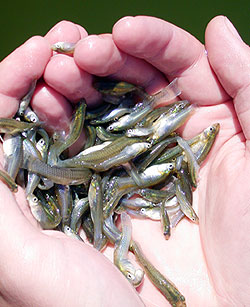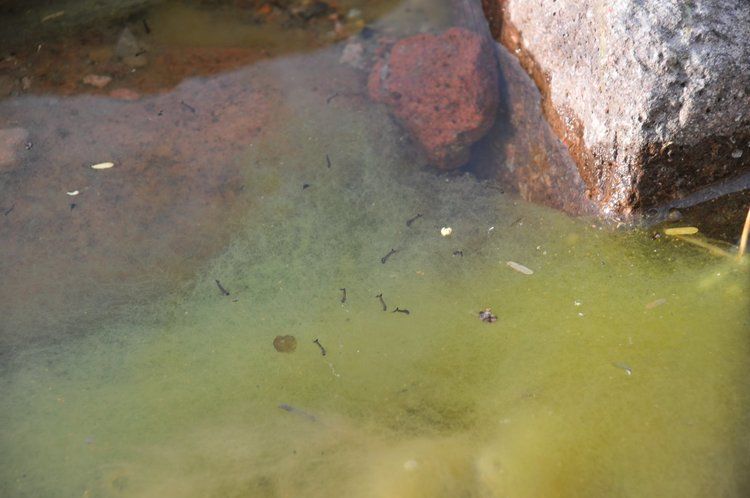 Rick CoshnearWith US immigration policy a confusing and unworkable mess, Sonoma County's participation in its punitive practices should be kept to a minimum, argues one local activist. So he's putting his own health on the line to make his point.
Rick CoshnearWith US immigration policy a confusing and unworkable mess, Sonoma County's participation in its punitive practices should be kept to a minimum, argues one local activist. So he's putting his own health on the line to make his point.
 Is a two week hunger strike long enough to be effective? Santa Rosa Immigration lawyer Rick Coshnear admits he may have to find out, if he has to cut it short to uphold his commitment to his professional caseload.
Is a two week hunger strike long enough to be effective? Santa Rosa Immigration lawyer Rick Coshnear admits he may have to find out, if he has to cut it short to uphold his commitment to his professional caseload.
 From Arlington Virginia to Taos New Mexico, says Coshnear, a few concerned communities have tried to stand up to the ICE demands for immigration holds. Here in northern California, San Francisco and Santa Clara are in the forefront of those efforts, and last year the latter city won a significant, if little publicized admission from the federal agency.
From Arlington Virginia to Taos New Mexico, says Coshnear, a few concerned communities have tried to stand up to the ICE demands for immigration holds. Here in northern California, San Francisco and Santa Clara are in the forefront of those efforts, and last year the latter city won a significant, if little publicized admission from the federal agency.
His hunger strike has political and professional motivations, Coshnear explains, but it was also a serious personal response to prolonged and mounting frustrations around the immigration enforcement issue locally.
 To fend off the forces behind the global recession, suggests former economic hitman John Perkins, consumers need o embrace justice and sustainability as the values that drive their personal purchase decision-making, instead of just cheap prices.
To fend off the forces behind the global recession, suggests former economic hitman John Perkins, consumers need o embrace justice and sustainability as the values that drive their personal purchase decision-making, instead of just cheap prices.
 John Perkins
John Perkins
The regulation of corporations' behavior in the United States was much different in the nation's early years, says economist and writer John Perkins. But those tighter controls began slipping away more than a century ago, when the U.S. Supreme Court first embraced the concept now known as "corporate personhood."
 Widespread redirection of consumer choice-making, by itself, is not enough to reform corporate capitalism run amok. Perkins says the underlying message with its call for change needs to be clearly and directly articulated as well.
Widespread redirection of consumer choice-making, by itself, is not enough to reform corporate capitalism run amok. Perkins says the underlying message with its call for change needs to be clearly and directly articulated as well.
Observing recent world events through the lens of his past experienece as an economic hitman, Perkins says the question about the series of democratic uprisings in both the Middle East and Latin America is not why those people are angry, but what took them so long to rebel.


 California's community colleges have already seen their budgets for the coming year slashed by $400 million, and even bigger cuts may be looming. And they're only a small piece of the state's educational infrastructure. So what does the future hold for our schools?
California's community colleges have already seen their budgets for the coming year slashed by $400 million, and even bigger cuts may be looming. And they're only a small piece of the state's educational infrastructure. So what does the future hold for our schools?
 The public forum on "Our Education Crisis" will be held in Newman Auditorium on the SRJC campus, 2-4 pm on Friday, April 8. Michael Aparicio, a professor of philosophy at the JC, has organized the event, which will feature a varied panel of people who are involved, in one way or another, in making decisions about how money for education gets used.
The public forum on "Our Education Crisis" will be held in Newman Auditorium on the SRJC campus, 2-4 pm on Friday, April 8. Michael Aparicio, a professor of philosophy at the JC, has organized the event, which will feature a varied panel of people who are involved, in one way or another, in making decisions about how money for education gets used.
 Michael AparicioThe April 8th forum is actually the second in a series of three events intended to examine different aspects of California's education funding crisis. The first one, held in March, focused on the junior college specifically. Aparicio explains that there will be a broader theme for the third one, which will be held late this month.
Michael AparicioThe April 8th forum is actually the second in a series of three events intended to examine different aspects of California's education funding crisis. The first one, held in March, focused on the junior college specifically. Aparicio explains that there will be a broader theme for the third one, which will be held late this month.
 Sonoma County's innovative program to charge energy-saving home improvements against future property tax bills is two years old, and growing.
Sonoma County's innovative program to charge energy-saving home improvements against future property tax bills is two years old, and growing.
 The projects in the SCIEP program can be as small as $25,00 with no upper limit. Property owners can elect to repay the amount loaned over 5, 10 or 20 years. Beginning this July, participants will be required to submit before and after utility bills, to more accurately track the resulting benefits. But SCEIP manager Liz Yeager says she's confident that additional reporting will confirm a desirable outcome.
The projects in the SCIEP program can be as small as $25,00 with no upper limit. Property owners can elect to repay the amount loaned over 5, 10 or 20 years. Beginning this July, participants will be required to submit before and after utility bills, to more accurately track the resulting benefits. But SCEIP manager Liz Yeager says she's confident that additional reporting will confirm a desirable outcome.
Because the loan is attached to the home or building, rather than a debt held directly by the owner, Yeager adds, the criteria for qualifying for participation are less complicated that most other types of financing.
 It's an annual sequence: First the rains, then the sun comes out, and soon thereafter, clouds of mosquitoes. But at least now they are more of an annoyance than a health hazard.
It's an annual sequence: First the rains, then the sun comes out, and soon thereafter, clouds of mosquitoes. But at least now they are more of an annoyance than a health hazard.
 One of the most widely deployed anti-mosquito measures is placing fish that like to feed on them into waters where eggs or larvae are found or suspected. Nizza Sequeira, Public Relations Director for the Marin-Sonoma Mosquito and Vector Control District, says there is such demand for the fist that her office has built its own breeding tanks for them. The first batches should be ready for new homes in May.
One of the most widely deployed anti-mosquito measures is placing fish that like to feed on them into waters where eggs or larvae are found or suspected. Nizza Sequeira, Public Relations Director for the Marin-Sonoma Mosquito and Vector Control District, says there is such demand for the fist that her office has built its own breeding tanks for them. The first batches should be ready for new homes in May.
 Mosquito_larvae are long and thin, and can usualy be found close to the surface of the water in which they have hatched.In all of California, there were 11 confirmed cases of West Nile Disease last year, with the highest concentration, 15, reported in Kern County. Only 20 percent of people who are bitten and infected ever show any signs of the disease, which is characterized by symptoms similar to the flu.
Mosquito_larvae are long and thin, and can usualy be found close to the surface of the water in which they have hatched.In all of California, there were 11 confirmed cases of West Nile Disease last year, with the highest concentration, 15, reported in Kern County. Only 20 percent of people who are bitten and infected ever show any signs of the disease, which is characterized by symptoms similar to the flu.
 The offices of the Marin-Sonoma Mosquito and Vector Control District are located in Cotati at 595 Helman Lane. They're open Monday through Friday, 7 am to 3:30 pm, but closed for lunch between 11:30 and 12:30. Call them at 800-231-3236 (toll free) or 707-285-2200.
The offices of the Marin-Sonoma Mosquito and Vector Control District are located in Cotati at 595 Helman Lane. They're open Monday through Friday, 7 am to 3:30 pm, but closed for lunch between 11:30 and 12:30. Call them at 800-231-3236 (toll free) or 707-285-2200.


 Live Radio
Live Radio